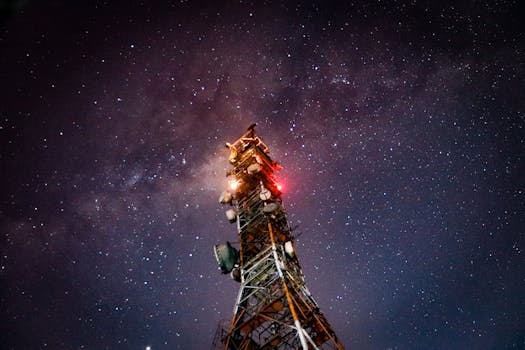
MEO Satellites: Revolutionizing Global Communication with Medium Earth Orbit Technology
MEO satellites, or Medium Earth Orbit satellites, are a type of satellite that operates at an altitude of around 2,000 to 36,000 kilometers above the Earth’s surface. This orbit is higher than Low Earth Orbit (LEO) satellites but lower than Geostationary Orbit (GEO) satellites. MEO satellites are gaining popularity due to their unique advantages, which make them an attractive option for various applications, including global communication, navigation, and Earth observation.
At the beginning of the MEO satellites era, the focus was on MEO satellites as a means to provide global coverage with a limited number of satellites. Today, MEO satellites are used for a wide range of applications, including satellite communications, navigation, and Earth observation. One of the main benefits of MEO satellites is their ability to provide global coverage with a relatively small number of satellites. This is because MEO satellites have a much larger footprint than LEO satellites, which means they can cover a larger area of the Earth’s surface.
How MEO Satellites Work
MEO satellites work by transmitting and receiving signals to and from Earth stations or other satellites. They use a variety of frequencies, including C-band, Ku-band, and Ka-band, to provide a range of services, including broadband internet, television broadcasting, and mobile communications. MEO satellites are typically equipped with multiple transponders, which are used to amplify and re-transmit signals. They also have onboard propulsion systems, which allow them to maintain their orbit and perform station-keeping maneuvers.
MEO satellites have several advantages over other types of satellites. For example, they have a lower latency than GEO satellites, which means they can provide faster and more responsive communications. They also have a higher elevation angle than LEO satellites, which means they can provide more reliable and consistent coverage. Additionally, MEO satellites can provide global coverage with a relatively small number of satellites, which makes them a cost-effective option for many applications.
Applications of MEO Satellites
MEO satellites have a wide range of applications, including satellite communications, navigation, and Earth observation. They are used to provide broadband internet, television broadcasting, and mobile communications to remote and underserved areas. They are also used for navigation, such as GPS and other satellite-based navigation systems. Additionally, MEO satellites are used for Earth observation, such as weather forecasting, climate monitoring, and disaster response.
One of the most significant applications of MEO satellites is in the field of satellite communications. MEO satellites can provide high-speed internet, voice, and data services to remote and underserved areas, which can help to bridge the digital divide and promote economic development. They can also provide backup communications services during natural disasters or other emergencies, which can help to save lives and reduce damage.
Future of MEO Satellites
The future of MEO satellites looks promising, with many new developments and innovations on the horizon. One of the most significant trends is the use of MEO satellites for 5G and other next-generation wireless networks. MEO satellites can provide high-speed, low-latency communications services, which are essential for many 5G applications, such as IoT, autonomous vehicles, and smart cities.
Another trend is the use of MEO satellites for Earth observation and remote sensing. MEO satellites can provide high-resolution images and data, which can be used for a wide range of applications, including weather forecasting, climate monitoring, and disaster response. They can also provide data and insights for agriculture, forestry, and other industries, which can help to promote sustainable development and reduce environmental impact.
